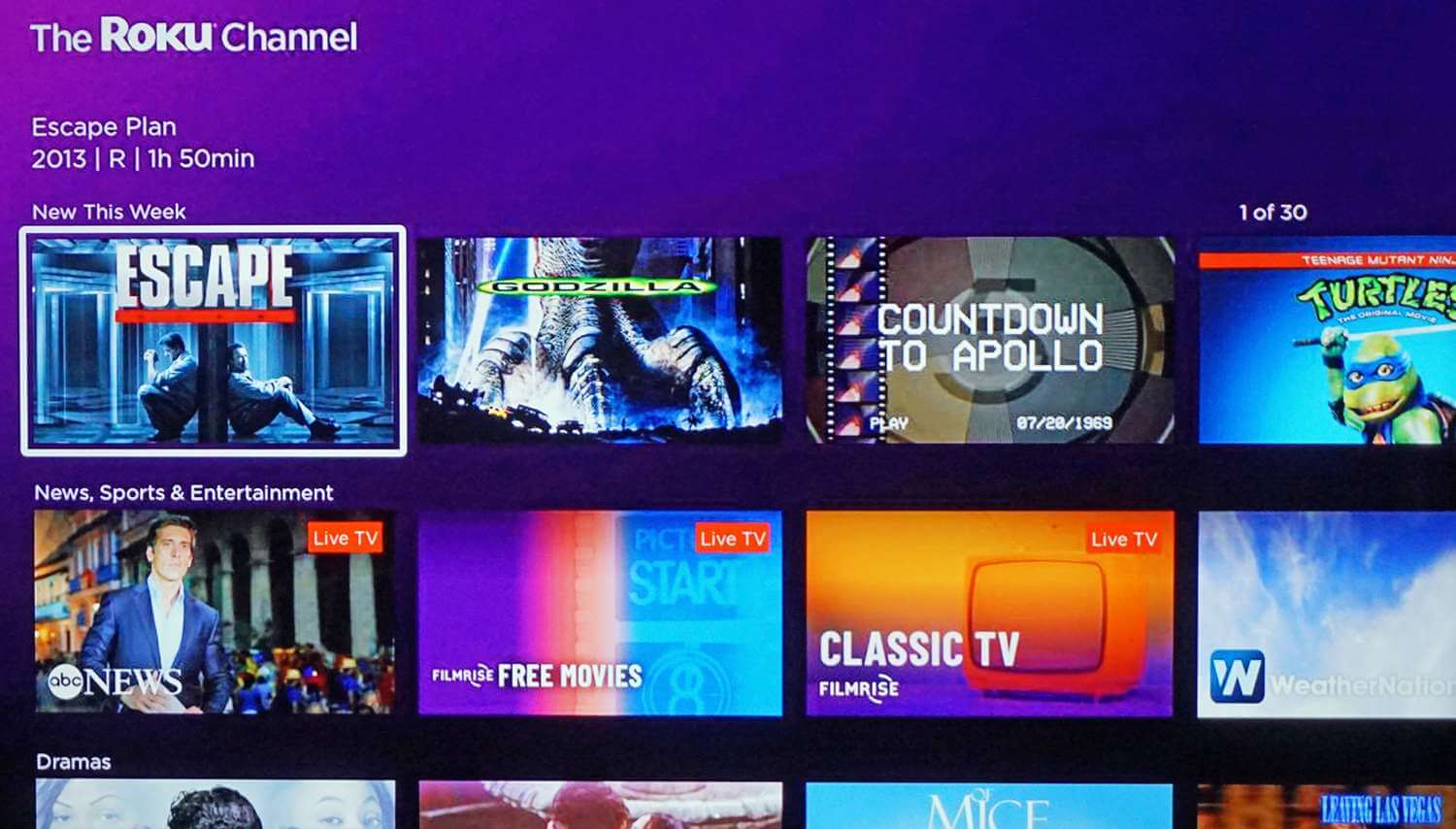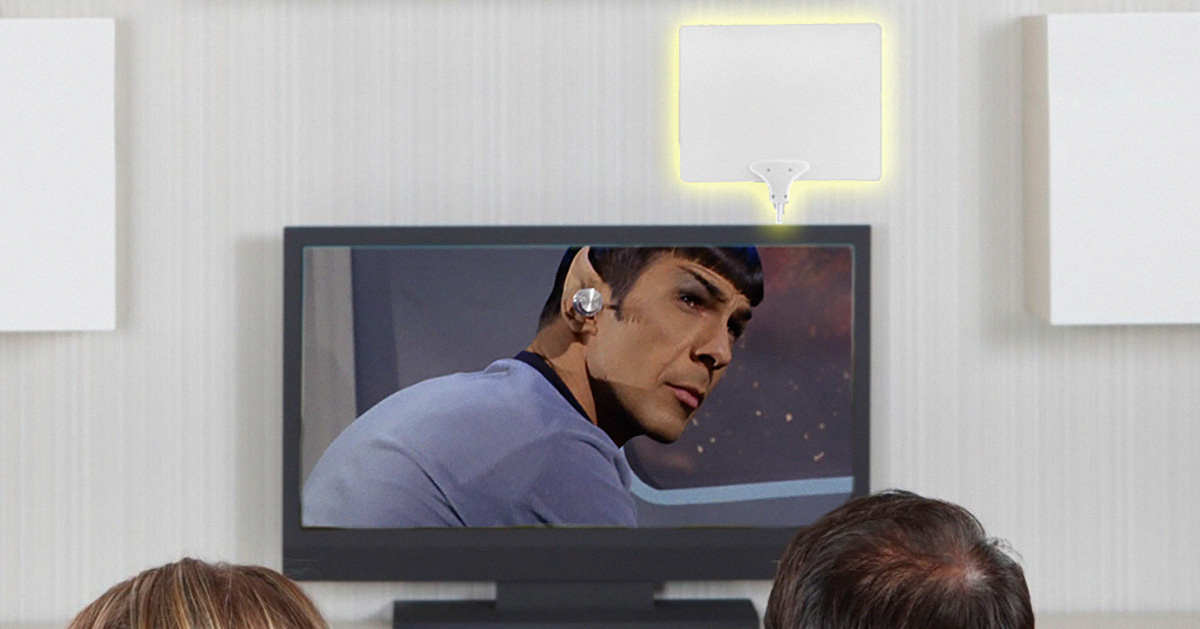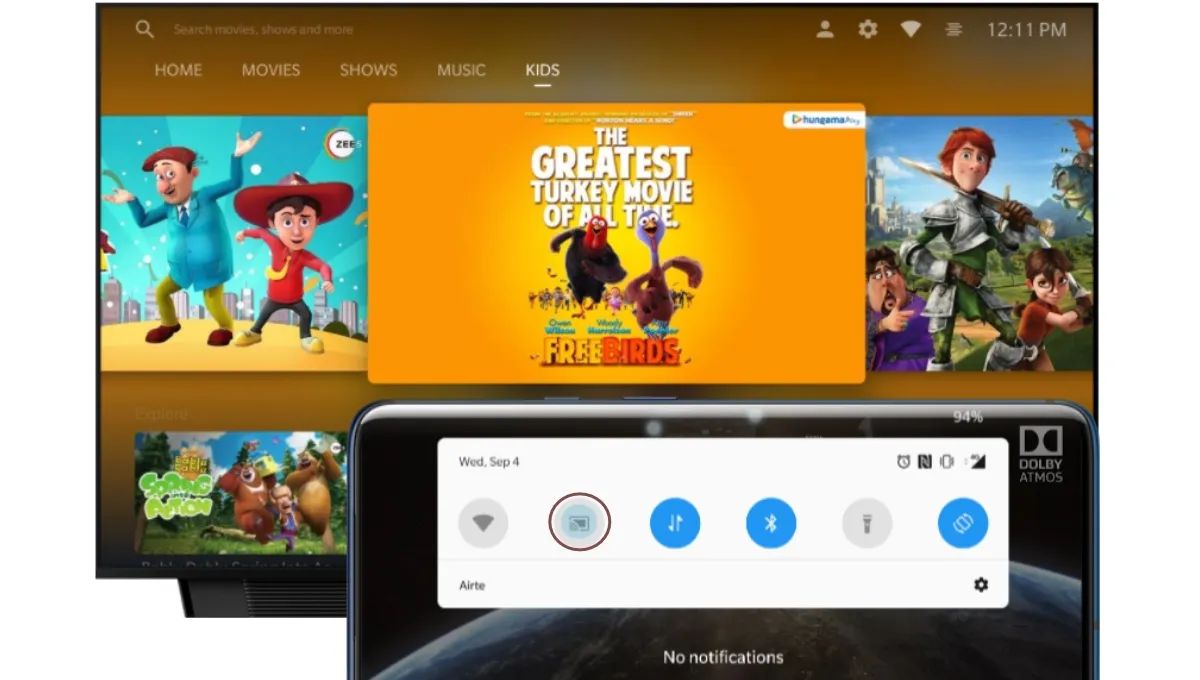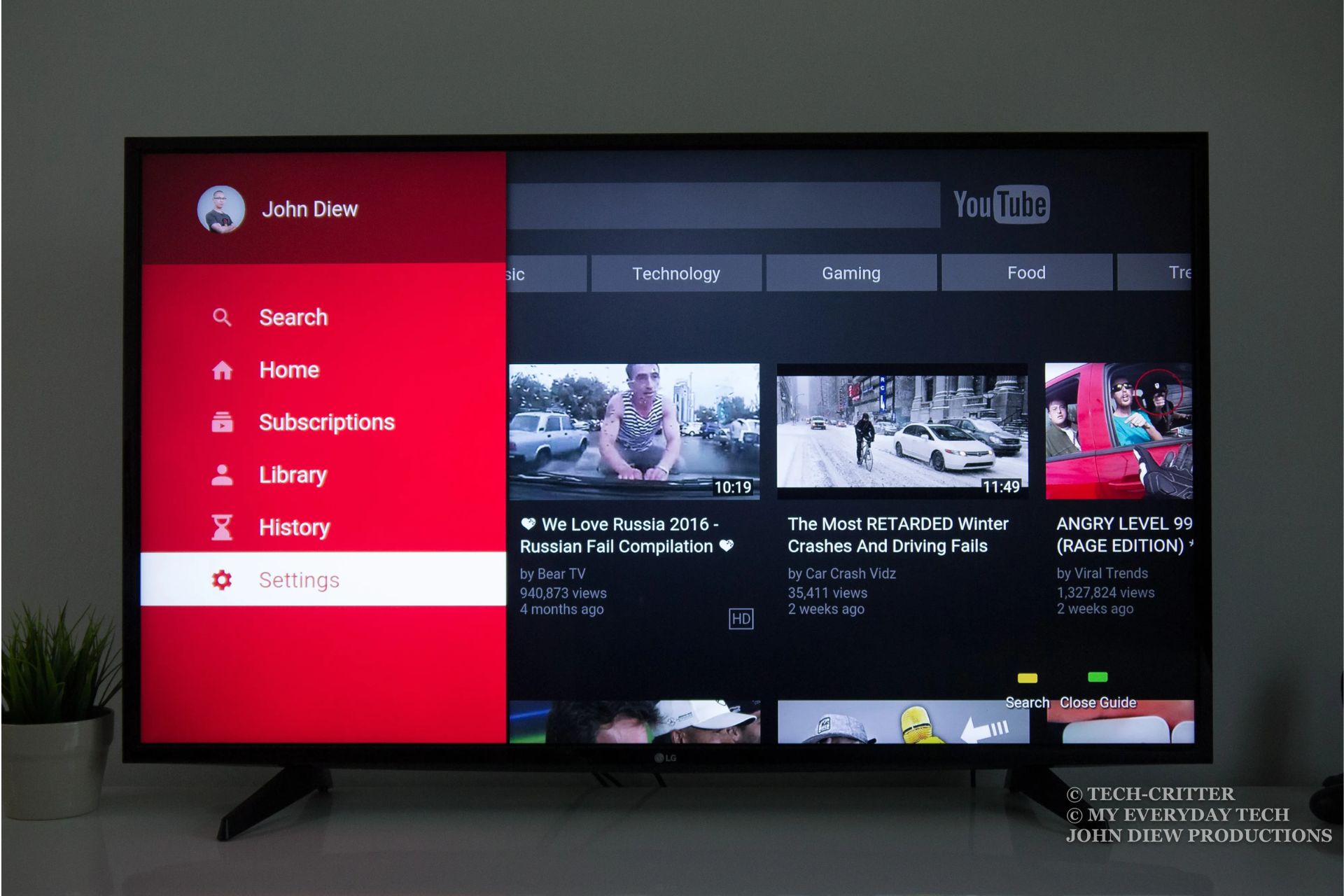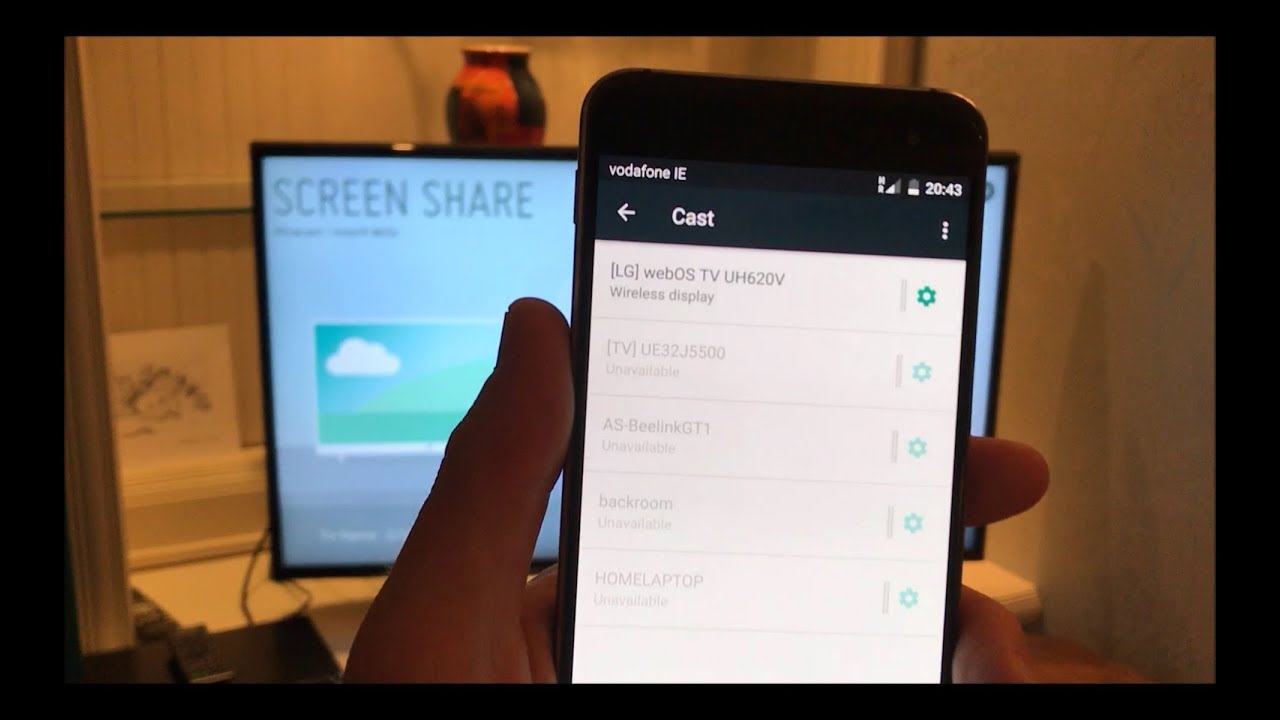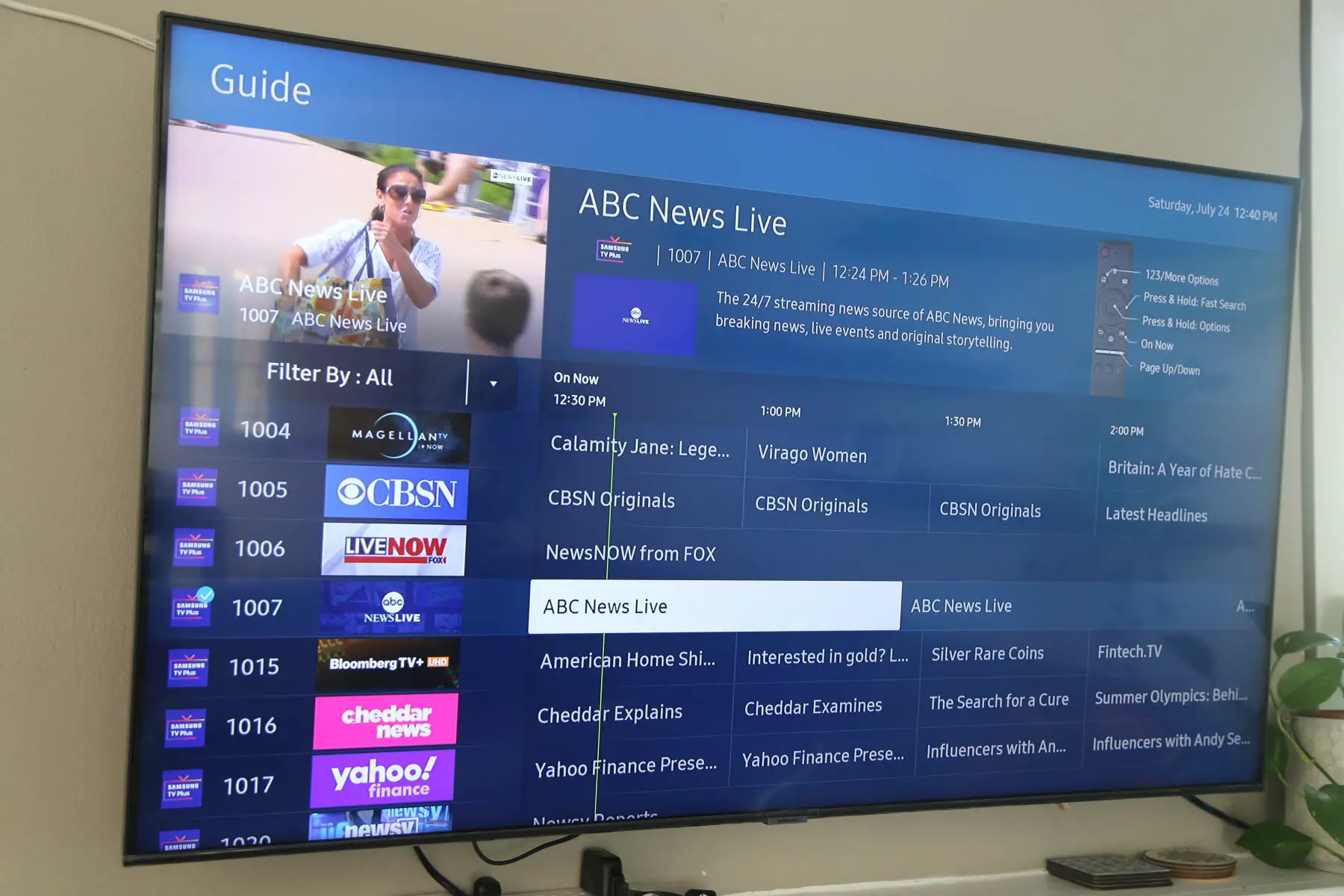Introduction
Welcome to the world of Smart TVs! With advancements in technology, televisions have now evolved to become more than just a device to watch your favorite shows and movies. Smart TVs have taken center stage, offering a wide range of features and functionalities that redefine the way we interact with our TVs.
But what exactly is a Smart TV? In simple terms, it’s a television that is equipped with internet connectivity and built-in software platforms, allowing you to access a variety of online services and applications directly on your TV screen. Gone are the days when you had to rely on external devices like streaming boxes or gaming consoles to enjoy online content on your TV.
The rise of Smart TVs has revolutionized the way we consume media, providing us with an immersive and interactive entertainment experience right from the comfort of our living rooms. Whether you’re a tech enthusiast or a casual TV viewer, there are many benefits to owning a Smart TV that go beyond traditional television viewing.
In this article, we will explore the exciting capabilities of Smart TVs and delve into the various features that make them an indispensable part of modern-day entertainment systems. From streaming services and apps to web browsing and smart home integration, Smart TVs have it all. So, let’s dive in and discover what a Smart TV can do for you!
But before we jump into the specifics, it’s important to note that Smart TVs come in various sizes, brands, and price ranges, offering different features and functionalities. Therefore, it’s crucial to choose a Smart TV that aligns with your needs and preferences.
Now that we’ve set the stage, let’s explore the incredible world of Smart TVs and uncover the endless possibilities they offer for your viewing pleasure.
What is a Smart TV?
A Smart TV is a television that combines the traditional capabilities of a TV with advanced internet connectivity and built-in software platforms. It offers a range of interactive features and services that go beyond traditional broadcasting.
Unlike regular televisions, Smart TVs can connect to the internet using either Wi-Fi or Ethernet, allowing users to access a wide array of online content directly on their TV screens. This opens up a world of possibilities, as users can stream their favorite movies and TV shows, download and use apps, browse the internet, and even connect with friends and family through video conferencing.
One of the key components of a Smart TV is its operating system, which serves as the interface between the user and the various features and services. Common operating systems used in Smart TVs include Android TV, webOS, Tizen, and Roku OS. These operating systems provide a user-friendly interface that allows easy navigation and access to a variety of streaming platforms, apps, and other functionalities.
Smart TVs also come equipped with a range of connectivity options, including HDMI ports, USB ports, and even Bluetooth, allowing users to connect external devices such as gaming consoles, soundbars, and smartphones to enhance their viewing experience.
Additionally, Smart TVs are often equipped with voice control capabilities, allowing users to control their TVs using voice commands. This feature offers a hands-free and convenient way to navigate through menus, search for content, adjust settings, and even control other smart devices in your home.
It’s worth noting that not all televisions with internet connectivity are considered Smart TVs. For a TV to be classified as “smart,” it must have a combination of advanced software features, an internet connection, and the ability to access online apps and services.
Overall, a Smart TV brings together the best of both worlds by seamlessly merging the traditional television experience with the vast capabilities of the internet. It offers a range of features and services that enhance your entertainment options and allow you to customize your viewing experience according to your preferences.
Benefits of Smart TV
Smart TVs offer numerous benefits that go beyond traditional television viewing. Here are some of the key advantages of owning a Smart TV:
- Access to a wide range of streaming services: One of the biggest advantages of a Smart TV is the ability to stream content from popular platforms like Netflix, Hulu, Amazon Prime Video, and more. With a Smart TV, you can easily access and enjoy your favorite movies, TV shows, and documentaries on demand.
- Endless apps and games: Smart TVs come with built-in app stores where you can download and install a variety of apps and games. From streaming apps to fitness apps and casual games to multiplayer gaming, there’s something for everyone. Transform your TV into a multifunctional entertainment hub with the wide range of apps available.
- Web browsing: Need to quickly look up information while watching TV? Smart TVs allow you to browse the internet directly on your TV screen. Whether you want to search for recipes, check the weather, or catch up on your favorite websites, the web browsing feature of a Smart TV makes it easy.
- Video conferencing: Stay connected with friends, family, or colleagues with the built-in video conferencing capabilities of Smart TVs. Make group video calls or attend virtual meetings without the need for a separate device or app. Enjoy the convenience of communicating face-to-face from the comfort of your living room.
- Voice control: Many Smart TVs are equipped with voice control capabilities, allowing you to operate your TV using voice commands. Simply speak into the remote control to search for content, change channels, adjust volume, and control other smart devices in your home. It’s a hands-free and intuitive way to interact with your TV.
- Smart home integration: With the increasing popularity of smart home devices, Smart TVs serve as a central hub for controlling various smart devices in your home. From adjusting the thermostat to turning off the lights, you can manage your smart home ecosystem directly from your TV.
- Screen mirroring: Want to share photos, videos, or presentations from your smartphone or laptop onto a larger screen? Smart TVs allow you to mirror the screen of your compatible devices wirelessly, making it easy to enjoy and share content with friends and family.
These are just a few of the many benefits that come with owning a Smart TV. Whether you’re a movie buff, a gamer, a multitasker, or a tech enthusiast, a Smart TV offers a whole new level of entertainment and convenience right at your fingertips.
Streaming Services
One of the biggest advantages of owning a Smart TV is the ability to access a wide range of streaming services directly on your television. With the rise of subscription-based platforms, Smart TVs have become the go-to device for streaming your favorite movies, TV shows, and original content. Here are some key aspects of streaming services on Smart TVs:
1. Variety of Content: Streaming services offer an extensive library of content, ranging from popular movies and TV series to original programming. With platforms like Netflix, Hulu, Disney+, and Amazon Prime Video, you’ll never run out of options for your viewing pleasure. Plus, these services often provide personalized recommendations based on your preferences, ensuring a tailored and enjoyable experience.
2. On-Demand Viewing: Unlike traditional broadcast television, streaming services allow you to watch what you want, when you want. You can binge-watch an entire season of your favorite show, pause and resume content at your convenience, and easily access past episodes or seasons with just a few clicks. The flexibility of on-demand viewing gives you full control over your entertainment experience.
3. Original Content: Streaming services have expanded beyond traditional TV shows and movies, producing their own original content. Platforms like Netflix, Hulu, and Amazon Prime Video are investing heavily in creating high-quality originals, including award-winning series, documentaries, and movies. From gripping dramas to hilarious comedies, there’s original content available for every taste.
4. Live TV and Sports: Alongside on-demand content, many streaming services offer live TV options that allow you to stream live broadcasts of your favorite channels. Some even include sports packages, enabling you to watch live sports events and stay up-to-date with the latest games. This feature eliminates the need for a separate cable or satellite subscription for accessing live TV.
5. Multiple Device Compatibility: Streaming services are not limited to Smart TVs alone. Most of them offer apps that are compatible with smartphones, tablets, gaming consoles, and other smart devices. This means you can seamlessly switch between devices and continue watching your favorite content without interruption.
6. Cost-Effectiveness: Compared to traditional cable or satellite subscriptions, streaming services often offer more affordable plans. You can choose from various subscription options that cater to your budget and preferences. Furthermore, many services provide the flexibility to cancel or modify your subscription at any time, giving you more control over your expenses.
7. Ad-Free Experience: Streaming services often offer ad-free viewing experiences, allowing you to enjoy uninterrupted content. While some platforms offer lower-cost plans with limited ads, premium subscriptions usually eliminate ads entirely, providing a seamless and immersive entertainment experience.
With the convenience, flexibility, and wide range of content available, streaming services have revolutionized the way we consume media. Smart TVs make accessing and enjoying these services even easier, bringing the world of on-demand entertainment directly to your living room.
Apps and Games
A notable feature of Smart TVs is the ability to download and use a variety of apps and games. Similar to smartphones and tablets, Smart TVs have their own app stores that offer a wide range of applications and games. Here’s what you need to know about apps and games on Smart TVs:
1. Entertainment Apps: Smart TVs provide access to popular streaming services like Netflix, Hulu, YouTube, and more. You can easily download these apps from the app store and enjoy your favorite movies, TV shows, and videos directly on your TV screen. Additionally, there are apps for music streaming services, podcasts, and even virtual fitness classes, allowing you to customize your entertainment experience.
2. Social Media Apps: Stay connected with your friends and family by accessing popular social media platforms on your Smart TV. Apps like Facebook, Instagram, Twitter, and TikTok can be downloaded and used directly on your TV screen, making it convenient to view and interact with your social feeds without needing to switch devices.
3. Productivity Apps: Turn your Smart TV into a productivity hub by downloading apps that assist with tasks such as note-taking, calendar management, and reminders. Some Smart TVs also allow you to access cloud storage services, enabling you to view and edit documents, presentations, and spreadsheets on a larger screen.
4. Gaming: Smart TVs have opened up a whole new world of gaming. You can download and play a wide variety of games directly on your TV, ranging from casual and puzzle games to immersive multiplayer experiences. Some Smart TVs even offer support for popular gaming controllers, providing a more authentic gaming experience.
5. Educational Apps: Smart TVs are not just for entertainment; they can also be educational tools. Many educational apps are available for download, providing access to interactive learning content, language lessons, science experiments, and more. Turn your TV into a valuable resource for both leisure and learning.
6. App Updates: Just like your smartphone, Smart TVs receive regular app updates, ensuring that you have access to the latest features and improvements. These updates can enhance the functionality and performance of your apps, guaranteeing an optimal user experience.
By offering a wide range of apps and games, Smart TVs provide endless entertainment and utility. From streaming your favorite content to staying connected on social media and exploring educational resources, apps and games on Smart TVs make your television a versatile device that caters to your diverse needs and interests.
Web Browsing
One of the key features of Smart TVs is the ability to browse the internet directly on your television screen. With web browsing capabilities, Smart TVs offer a convenient way to access online content and explore the world wide web. Here’s what you need to know about web browsing on Smart TVs:
1. Full Web Experience: Smart TVs allow you to browse the internet with a full web browser, similar to the experience on a computer or smartphone. You can visit your favorite websites, search for information, shop online, read articles, and more, all from the comfort of your living room.
2. Large Screen Viewing: The advantage of web browsing on a Smart TV is the larger screen size, providing a more immersive and comfortable browsing experience. You can enjoy websites with rich multimedia content, view detailed images and videos, and easily read text without straining your eyes.
3. Easy Navigation: Smart TVs are designed with user-friendly interfaces and remote controls that simplify web browsing. You can navigate through web pages using directional buttons or a pointing device on the remote control. Some Smart TVs also support wireless keyboards or mouse devices for even easier web navigation.
4. Bookmarks and Favorites: Just like on a computer or smartphone, Smart TVs allow you to save your favorite websites as bookmarks or favorites. This feature makes it convenient to access your frequently visited sites without having to type in the web address every time.
5. Multi-Tab Browsing: Some Smart TVs support multi-tab browsing, allowing you to open and switch between multiple web pages simultaneously. This is useful when researching or multitasking, as you can have different websites open at the same time.
6. Privacy and Security: Smart TVs prioritize user privacy and security when it comes to web browsing. They often include features that protect against phishing attempts and malicious websites. Additionally, you can clear your browsing history and cookies on Smart TVs, ensuring your online activities remain private.
7. Content Sharing: Web browsing on a Smart TV opens up possibilities for content sharing. You can easily display websites, images, or videos to a larger audience by mirroring your smartphone or laptop screen onto the TV. This is particularly useful for presentations, family photo sharing, and viewing web content together.
With the ability to access the internet directly on your TV, Smart TVs offer a complete web browsing experience. Whether you want to catch up on the latest news, shop online, or browse social media, web browsing capabilities transform your Smart TV into a versatile device that keeps you connected to the online world in the comfort of your living room.
Video Conferencing
With the rise of remote work and virtual communication, video conferencing has become an essential tool for staying connected with colleagues, clients, friends, and family. Smart TVs offer an immersive and convenient way to engage in video conferencing directly from your living room. Here’s what you need to know about video conferencing on Smart TVs:
1. Integrated Camera and Microphone: Many Smart TVs come equipped with a built-in camera and microphone, making video conferencing hassle-free. You don’t need to set up external devices or connect webcams and microphones separately. Simply access the video conferencing app on your Smart TV, and you’re ready to start your virtual meetings or catch up with loved ones.
2. Large Screen Display: Video conferencing on a Smart TV offers the advantage of a larger screen display, providing a more immersive experience and allowing you to see participants more clearly. This is particularly beneficial during group meetings or when connecting with multiple people at once.
3. Clear Audio: Smart TVs are designed with high-quality speakers, ensuring clear audio during video calls. The built-in microphones also capture audio effectively, allowing you to communicate effortlessly without the need for external microphones.
4. Multi-Party Conferencing: Some Smart TVs support multi-party video conferencing, allowing you to connect with multiple participants at the same time. This is ideal for business meetings, virtual classrooms, or family gatherings where multiple people need to be on the call simultaneously.
5. Screen Sharing: In addition to video conferencing, Smart TVs often offer screen sharing capabilities. This allows you to share your screen with other participants, making it easy to present slides, documents, or any other visual content directly from your TV. Collaborate effectively during meetings or share memories with friends and family by displaying photos or videos.
6. Compatible Video Conferencing Apps: Smart TVs support popular video conferencing apps like Zoom, Microsoft Teams, Skype, and Google Meet, among others. These apps offer a familiar and user-friendly interface, allowing you to join meetings, send invitations, and interact with participants seamlessly.
7. Convenient Setup: Setting up video conferencing on a Smart TV is straightforward. Once you’ve downloaded the video conferencing app from the app store or activated the pre-installed app, you typically log in with your credentials and start using the service. Smart TVs offer a user-friendly interface for navigating through the various features and settings of the video conferencing app.
With video conferencing capabilities on Smart TVs, you can transform your living room into a virtual meeting room or a gathering place for friends and family. Enjoy the benefits of face-to-face communication on a large screen, all from the comfort of your home.
Voice Control
Voice control is a prominent feature in Smart TVs that allows you to operate your television using voice commands. With voice control capabilities, Smart TVs offer a convenient and hands-free way to interact with your TV and access various features and functions. Here’s what you need to know about voice control on Smart TVs:
1. Hands-Free Operation: Voice control eliminates the need for manually navigating through menus and using buttons on the remote control. Instead, you can simply speak commands to control your Smart TV. Whether you want to search for content, change channels, adjust volume, or launch apps, voice commands make it quick and effortless.
2. Natural Language Processing: Smart TVs use advanced natural language processing technology to understand and interpret voice commands accurately. This means you can use everyday language when speaking to your TV, making it feel more like a conversation rather than a series of specific commands.
3. Voice Search: Searching for your favorite shows, movies, or apps becomes a breeze with voice search. With a simple voice command, you can search for specific titles, genres, actors, or even ask for recommendations. This saves time and makes content discovery more convenient.
4. Control Multiple Devices: Voice control on Smart TVs often extends beyond controlling just the TV itself. Many Smart TVs offer the ability to control other smart devices in your home, such as soundbars, lighting systems, thermostats, and more. You can create a connected and seamless smart home experience by managing multiple devices with voice commands.
5. Personalized Voice Profiles: Some Smart TVs allow you to create personalized voice profiles for different users in your household. This enhances the accuracy of voice recognition, ensuring that the TV responds specifically to your voice commands and preferences.
6. Integration with Virtual Assistants: Smart TVs with voice control often have integration with virtual assistants like Amazon Alexa or Google Assistant. This opens up a whole new realm of possibilities, allowing you to control your TV and other connected devices using your preferred virtual assistant.
7. Accessibility: Voice control on Smart TVs has significant benefits for individuals with physical disabilities or impairments. It provides an inclusive and accessible option for navigating and enjoying TV content without relying on manual dexterity.
With voice control, Smart TVs offer a new level of convenience and ease of use. By simply speaking commands, you can effortlessly control your television and other connected devices, providing a seamless and hands-free entertainment experience.
Smart Home Integration
Smart TVs are not just standalone devices – they serve as central hubs for integrating and controlling other smart devices in your home. With smart home integration, Smart TVs offer a seamless and interconnected experience, allowing you to manage and control various aspects of your smart home ecosystem. Here’s what you need to know about smart home integration on Smart TVs:
1. Control Hub: Smart TVs function as a control hub for other smart devices in your home. Through the TV interface, you can access and control compatible devices such as smart lights, thermostats, security cameras, door locks, and more. This centralization makes it convenient to manage your smart home ecosystem from one device.
2. Voice Control: Smart TVs with voice control capabilities enhance the integration of your smart home devices. Using voice commands, you can control not only the TV functions but also other connected devices. For example, you can adjust the temperature, dim the lights, or lock the doors, all by speaking to your Smart TV.
3. Automation and Scenes: Smart TVs allow you to create automation scenarios and scenes that combine multiple smart devices in your home. For instance, you can create a “Movie Night” scene that dims the lights, adjusts the blinds, and turns on the TV, all with a single command or tap on the TV remote control.
4. Enhanced Entertainment: Smart home integration enhances your entertainment experience on a Smart TV. Through integration with smart speakers or sound systems, you can enjoy immersive audio, sync lights with the on-screen action, or create ambience to match the content you’re watching.
5. Energy Saving: Smart home integration on Smart TVs contributes to energy-saving initiatives. By connecting with smart thermostats, you can optimize energy usage by adjusting the temperature settings based on your TV usage patterns. You can also monitor and control energy-consuming devices, such as turning off lights or switching off standby devices directly from the TV interface.
6. Seamless App and Device Control: Smart TVs make it easy to control smart home devices and apps through their user-friendly interfaces. From the TV menu, you can access and manage compatible apps and devices, adjust settings, and receive notifications, offering convenient control without needing additional devices or separate apps.
7. Compatibility and Expansion: Smart TVs typically support major smart home protocols and platforms, ensuring compatibility with a wide range of devices from different manufacturers. This allows you to expand your smart home ecosystem and integrate various devices seamlessly.
With Smart TVs serving as the central hub for smart home integration, you can elevate the comfort, convenience, and efficiency of your living space. Enjoy the benefits of a fully connected and intelligent home as you manage and control your smart devices through your Smart TV interface.
Screen Mirroring
Screen mirroring is a convenient feature offered by Smart TVs that allows you to display the screen of your compatible devices, such as smartphones, tablets, or laptops, directly on your TV screen. With screen mirroring capabilities, Smart TVs offer a versatile solution for sharing and enjoying content from your personal devices on a larger display. Here’s what you need to know about screen mirroring on Smart TVs:
1. Wireless Display: Screen mirroring eliminates the need for cables or physical connections to share your device’s screen. Instead, Smart TVs use wireless technology, such as Wi-Fi or Bluetooth, to establish a connection with your device, enabling a seamless mirroring experience.
2. Larger Display: By mirroring your device’s screen onto a Smart TV, you can enjoy your favorite content, including photos, videos, presentations, or even games, on a larger and more immersive display. This is particularly useful for sharing visual content with a group or enjoying multimedia content with enhanced clarity and detail.
3. Easy Setup: Screen mirroring on Smart TVs is typically straightforward and user-friendly. Most Smart TVs have built-in screen mirroring capabilities, which can be accessed from the settings menu or through dedicated remote control buttons. Similarly, devices that support screen mirroring often have a simple process to enable the feature and establish a connection with the Smart TV.
4. Multi-Platform Compatibility: Smart TVs support screen mirroring from a variety of platforms and operating systems. Whether you have an Android, iOS, or Windows device, you can often find compatibility with Smart TVs, ensuring that you can mirror your screen regardless of the device you own.
5. Real-Time Interaction: Screen mirroring on Smart TVs allows for real-time interaction with your content. This means you can control and navigate through your device’s interface using the Smart TV remote control or remote control app, providing a seamless and intuitive mirroring experience.
6. Versatile Sharing: Screen mirroring is not limited to specific types of content. You can showcase photos or videos from your smartphone, deliver a presentation from your laptop, or even share social media feeds or streaming content from your tablet. The flexibility of screen mirroring opens up a wide range of sharing possibilities.
7. Collaborative and Productive: Screen mirroring is useful for both personal entertainment and professional purposes. You can collaborate with colleagues by sharing your laptop screen during meetings or presentations, enhancing communication and collaboration. For personal use, screen mirroring allows for easier content sharing with family or friends, such as sharing digital photo albums or streaming videos together.
Screen mirroring on Smart TVs provides a seamless and intuitive way to share and enjoy content from your personal devices on a larger screen. Whether for entertainment, collaboration, or sharing memories, screen mirroring enhances the versatility and enjoyment of your Smart TV experience.
Conclusion
Smart TVs have redefined the way we interact with our televisions, offering a wide range of features and functionalities that go beyond traditional viewing. From streaming services and apps to web browsing and smart home integration, Smart TVs have become an integral part of modern-day entertainment systems.
With access to popular streaming services, Smart TVs allow us to enjoy on-demand content anytime, anywhere. From binge-watching our favorite shows to discovering new movies, the world of entertainment is literally at our fingertips. Additionally, the availability of apps and games on Smart TVs further enhances our entertainment options, providing endless hours of fun and entertainment.
The ability to browse the internet directly on a Smart TV opens up a whole new world of possibilities. From searching for information and shopping online to staying connected on social media, web browsing on a larger screen enhances our online experience. Video conferencing capabilities on Smart TVs have become more important than ever, enabling us to stay connected with colleagues, friends, and family, regardless of our physical location.
Voice control on Smart TVs offers a convenient and hands-free way to navigate through menus, search for content, and control other smart devices in our homes. With just a few voice commands, we can easily manage our viewing experience and create a connected ecosystem within our smart homes.
Screen mirroring on Smart TVs allows us to share and enjoy content from our smartphones, tablets, and laptops on a larger display, enhancing the viewing experience and facilitating collaboration. Whether it’s sharing photos, delivering presentations, or enjoying multimedia content, screen mirroring provides a versatile solution for content sharing.
In conclusion, Smart TVs provide numerous benefits and functionalities that enhance our entertainment, connectivity, and convenience. With their advanced features and integration with other smart devices, Smart TVs have become the central hub of our smart homes, offering a seamless and immersive entertainment experience.









